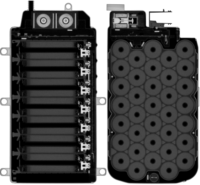The Initial Quality Study, which serves as the industry benchmark for new-vehicle quality measured at
90 days of ownership, has been redesigned for 2006 to capture problems experienced by owners in two distinct categories-quality of design and quality of production (defects and malfunctions).
"New vehicles today are often packed with new technologies that unfortunately can be complicated and frustrating for the average consumer when their integration is not well executed," says Joe Ivers, executive director of quality and customer satisfaction research for J.D. Power and Associates. "In the eyes of consumers, design flaws can have as much of an impact on their perceptions of quality as can a defect. Yet, many manufacturers have tended to address quality solely on the plant floor without considering design factors."
Based on both design quality and production quality considerations, the study finds that automakers can vary in their performance on these two components. Brands with the fewest defects and malfunctions include BMW, Chrysler, Hyundai, Lexus, Porsche and Toyota. Brands with the fewest design problems include GMC, Hyundai, Jaguar, Lexus, Nissan and Porsche.
"Without considering both quality factors, one might fail to recognize vehicles that are, in fact, excellent in certain ways," says Ivers. "For example, BMW vehicles have among the fewest defects and malfunctions, along with Toyota. But BMW approaches controls and displays in a way that creates some problems for customers, leading to more design-related problems overall than Toyota incurs. Automakers differ significantly in how they define quality and what parts of the organization they hold accountable for it. Clearing both critical quality hurdles is an accomplishment experienced by only a limited number of brands."



